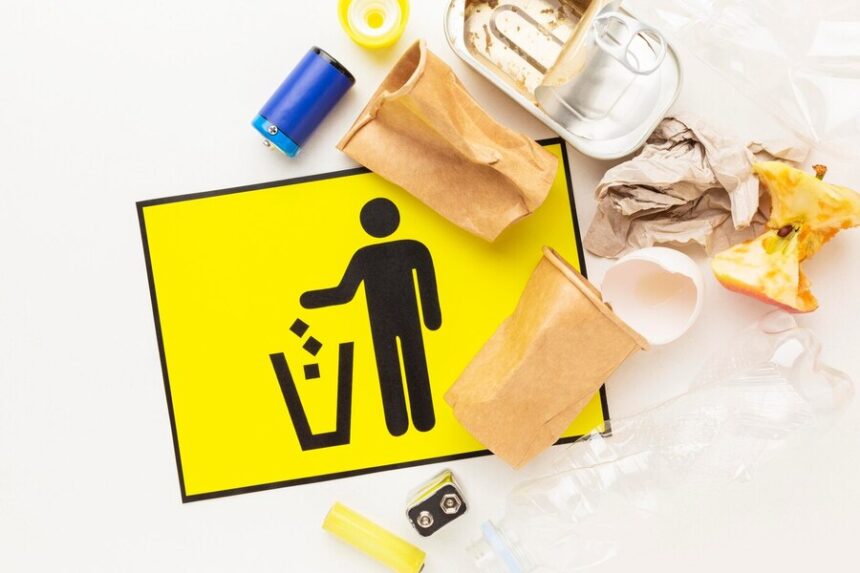Littering remains one of the most pervasive environmental challenges of the modern age. In 2023, littering statistics reveal troubling trends that emphasize the need for immediate action. From overflowing urban landfills to the growing menace of ocean plastics, the impact of human waste has reached critical levels, prompting researchers and policymakers to study and address this global issue.
The latest littering statistics from 2023 shed light on the volume of waste, the primary contributors, and the devastating effects on ecosystems, wildlife, and public health. Plastic waste continues to dominate as the leading form of litter, with urban areas seeing a rise in improperly discarded items. Additionally, the social and economic costs of littering have sparked debates about implementing stricter regulations and educational campaigns.
This article delves into the data, analyzing trends, exploring the reasons behind persistent littering, and offering actionable solutions to mitigate its impacts. Whether you’re an environmentalist, policymaker, or concerned citizen, understanding these littering statistics is crucial for shaping a cleaner and more sustainable future.
What Do Littering Statistics in 2023 Reveal About Global Trends?
Littering statistics in 2023 provide a comprehensive picture of the growing waste management crisis worldwide. Studies indicate that plastic waste continues to dominate, accounting for nearly 70% of litter in urban areas. Single-use plastics such as bottles, wrappers, and straws are among the most discarded items, with cigarette butts and fast-food packaging not far behind.
Regional data highlights significant differences in littering behaviors. High-income countries, while generating more waste, often have better waste management systems, resulting in lower rates of visible litter. Conversely, low- and middle-income countries struggle with inadequate infrastructure, leading to higher rates of littering in public spaces. Coastal areas remain particularly vulnerable, with an estimated 80% of ocean-bound plastic originating from land-based sources.
The rise in littering is not limited to any specific region. Urbanization, population growth, and the proliferation of disposable products contribute to the increase in improperly discarded waste. These trends underscore the need for a collective global effort to address the root causes of littering and implement sustainable solutions.
How Does Littering Impact the Environment and Ecosystems in 2023?
Effects on Wildlife
Litter, particularly plastics, poses a severe threat to wildlife. Animals often mistake plastic waste for food, leading to ingestion that causes internal injuries, starvation, or death. Birds, marine mammals, and fish are among the most affected species, with millions dying each year due to entanglement or consumption of littered materials.
Pollution of Water Bodies
Littering significantly contributes to water pollution, especially in rivers, lakes, and oceans. Plastics break down into microplastics, which infiltrate aquatic ecosystems and enter the food chain. The presence of these pollutants affects water quality and endangers both aquatic life and human health.
Soil Degradation
Improperly discarded waste alters soil composition, reducing fertility and affecting plant growth. Non-biodegradable materials, such as plastics and metals, disrupt the natural balance of soil ecosystems, hindering agricultural productivity.
Contribution to Climate Change
Decomposing litter, particularly organic waste in landfills, releases methane, a potent greenhouse gas that accelerates climate change. The environmental footprint of littering extends beyond visible pollution, impacting global carbon emissions and contributing to the ongoing climate crisis.
What Are the Economic Costs of Littering in 2023?
The economic impact of littering is staggering, burdening governments, businesses, and taxpayers. Municipalities allocate significant budgets to cleaning up littered streets, parks, and waterways. Coastal areas reliant on tourism often suffer revenue losses due to unsightly beaches and polluted waters.
- Tourism: Litter discourages tourism, reducing income for local economies dependent on visitors.
- Fisheries: Plastic pollution affects fish populations, threatening the livelihoods of those in the fishing industry.
- Healthcare Costs: Litter contributes to environmental pollution, which can lead to respiratory and waterborne illnesses, increasing healthcare expenditures.
These costs underscore the importance of investing in prevention and awareness to mitigate the long-term financial burden of littering.
Why Do People Continue to Litter Despite Awareness?
Psychological and social factors play a significant role in littering behavior. Studies suggest that individuals are more likely to litter in areas where existing waste is visible, perpetuating a cycle of neglect. Social norms also influence behavior, as people may rationalize littering if they observe others doing the same.
Cultural attitudes toward waste management vary globally, impacting how societies perceive littering. In some regions, inadequate education about environmental consequences contributes to apathy or ignorance. Addressing these underlying factors is essential to creating lasting behavioral change.
How Are Countries Combating Littering in 2023?
Global Policies to Combat Littering
Countries across the globe are implementing ambitious policies to tackle the growing problem of littering. Many nations have adopted bans on single-use plastics, one of the primary contributors to environmental pollution. These bans aim to reduce the production and consumption of disposable items such as straws, plastic bags, and cutlery, which often end up as litter in public spaces and ecosystems. Alongside these measures, governments are introducing strict penalties for improper waste disposal. Fines and other enforcement actions not only discourage individuals from littering but also encourage businesses to adopt more sustainable practices. By combining legislation with public awareness campaigns, these policies aim to create a lasting cultural shift in how communities approach waste management.
Success Stories in Recycling and Waste Management
Several countries stand out for their innovative and effective waste management systems. Sweden, for instance, has developed a comprehensive recycling system that not only processes household waste but also generates energy from non-recyclable materials. This approach has dramatically reduced littering rates and minimized landfill use. Similarly, Germany’s deposit refund system incentivizes the return of beverage containers, significantly increasing recycling rates and reducing waste in public areas. These case studies highlight the importance of systemic solutions that combine convenience, incentives, and accountability to achieve sustainable waste management. Other nations are looking to replicate these models, adapting them to suit local conditions and challenges.
Technological Innovations in Litter Management
Advancements in technology are revolutionizing the way cities manage litter. Smart trash bins, equipped with sensors, monitor waste levels in real-time, optimizing collection routes and reducing the likelihood of overflowing bins. In addition, AI-powered waste sorting systems are transforming recycling facilities by accurately separating recyclable materials from general waste. These technologies not only improve the efficiency of waste management but also encourage proper disposal practices among the public. Urban areas, in particular, benefit from these innovations, as they address the challenges posed by high population densities and limited space for traditional waste disposal systems.
What Can Individuals and Communities Do to Address Littering in 2023?
Engaging in Clean-Up Campaigns
One of the most effective ways to combat littering is by participating in clean-up campaigns. Community-led efforts to clean parks, streets, beaches, and other public spaces not only reduce visible litter but also foster a sense of collective responsibility. These initiatives bring individuals together, creating opportunities to connect with others who share a commitment to a cleaner environment. Clean-up campaigns also serve as a powerful reminder of the consequences of littering, encouraging participants and onlookers to adopt better waste disposal habits. By involving local schools, businesses, and organizations, these campaigns can amplify their impact, turning small efforts into large-scale movements.
Promoting Effective Recycling Programs
Recycling plays a critical role in addressing the global littering problem. Encouraging proper waste segregation ensures that recyclable materials, such as plastics, paper, and metals, are diverted from landfills and public spaces. Communities can promote recycling through education, accessible recycling facilities, and incentive programs that reward individuals for proper waste disposal. Local governments and businesses also play a vital role by investing in efficient recycling systems and reducing barriers to participation.
Recycling not only minimizes the volume of waste ending up in public spaces but also conserves resources and reduces environmental pollution. A well-implemented recycling program benefits the entire community by fostering sustainable practices and reducing the ecological footprint of waste.
Inspiring Change Through Education and Advocacy
Education and advocacy are essential for driving long-term changes in behavior related to littering. Raising awareness about the environmental, social, and economic consequences of littering can inspire individuals to make more conscious choices. Schools, workplaces, and community centers provide excellent platforms for workshops, campaigns, and discussions that educate people on the importance of responsible waste management.
Advocacy efforts, including public service announcements, social media campaigns, and partnerships with influencers, can extend the reach of anti-littering messages. By emphasizing the collective benefits of a cleaner environment, educational initiatives and advocacy campaigns empower individuals and communities to take action, creating a culture of accountability and environmental stewardship. Through these combined efforts, the fight against littering becomes a shared mission, ensuring a healthier and more sustainable future.
Conclusion
Littering statistics in 2023 highlight the urgent need for collective action to address this global issue. From environmental degradation to economic losses, the consequences of littering are far-reaching. By implementing effective policies, leveraging technology, and fostering public awareness, societies can reduce littering and pave the way for a cleaner, more sustainable future.
Frequently Asked Questions
Q. What are the most common items found in littering statistics in 2023?
A. Plastic bottles, cigarette butts, and food wrappers dominate global littering statistics in 2023.
Q. How much plastic waste enters the oceans each year?
A. Approximately 8 million metric tons of plastic waste enter oceans annually, with significant contributions from littering.
Q. Which regions experience the highest littering rates?
A. Urban areas and coastal regions report the highest littering rates due to dense populations and tourism activities.
Q. What policies are most effective in combating littering?
A. Banning single-use plastics, implementing recycling incentives, and enforcing penalties for littering are among the most effective policies.
Q. How can individuals contribute to reducing littering?
A. Individuals can participate in clean-up drives, practice proper waste disposal, and educate others about the impact of littering.




